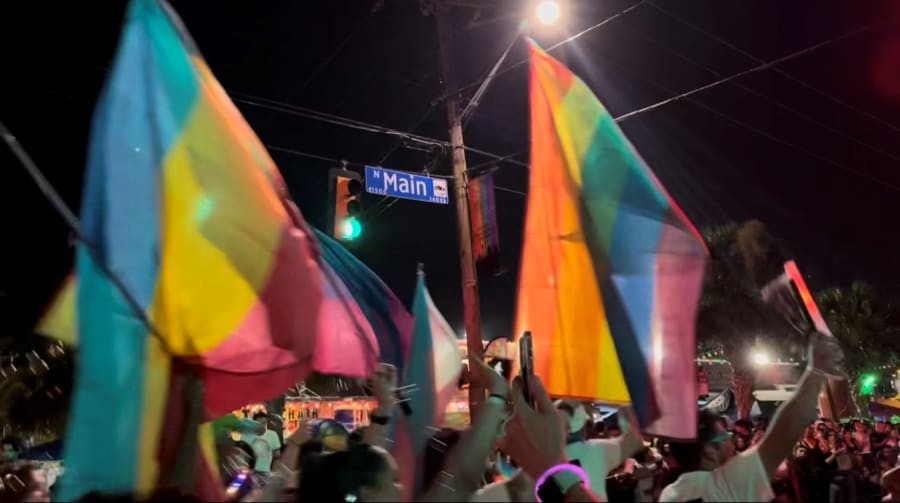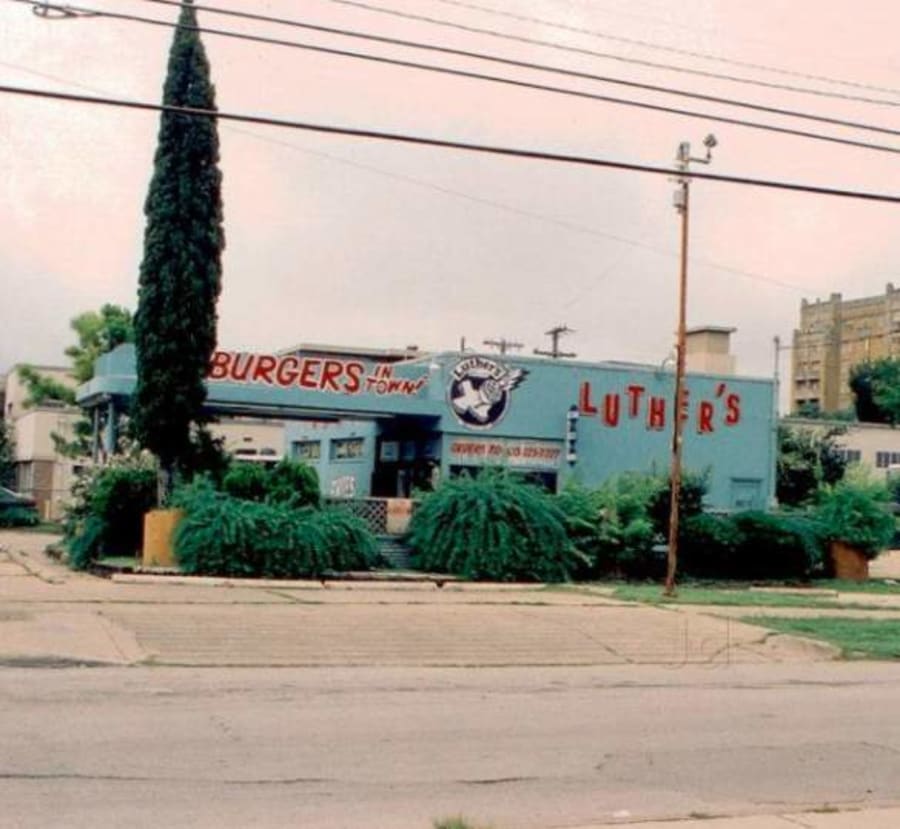San Antonio is rich in history from all walks of life. A small portion of that history can be found in the 1400 block of Main Street north of downtown. If you have ever driven through that area, there is no question it is claimed by the LGBTQ+ community. The crosswalks are painted with rainbows and pride flags are abundant. But why is that particular area of San Antonio known as the gay district?
“It came from decades of people being very intentional about claiming space in San Antonio.” - Melissa Gohlke, assistant archivist at UTSA, expert in LGBTQ history
On June 25th, the “Pride Bigger Than Texas” parade rolled down those rainbow-painted streets. Thousands were in attendance for what is called one of the biggest pride celebrations in the country. The weekend is a vital moment of celebration for the LGBTQ+ community to honor the progress made in achieving equality. The simple fact that this celebration has ballooned into the size it is today shows the progress made for the LGBTQ+ community.

Melissa Gohlke is an assistant archivist at UTSA with immense knowledge of queer history. She says the demographic of San Antonio began changing in the early ‘60s. This is what Melissa called the “white flight” era. Mostly white families were moving northward, away from the downtown areas, as more diverse groups began populating downtown San Antonio.
Melissa said this movement opened up space for minorities. One of the minorities that took advantage of the freshly opened space was the LGBTQ+ community. During the ‘50s and ‘60s, homebuyers could find a house for $50,000 or less. Low prices and open space were the perfect combinations for the LGBTQ+ community to plant roots.
“As the seventies march on, more and more businesses open up, and you have gayborhoods starting to form. We have evidence for these through a 1983 gay census that was conducted by a professor here at UTSA,” says Gohlke. That census was passed out during Fiesta events in 1983. Surveyors had thousands of responses, and after crunching the numbers, it revealed that over 5,900 people claimed they were gay in the Tobin Hills area. The gay strip is conveniently located in that neighborhood.
“It was already kind of an area where there were three bars. They didn’t identify it like that because, like I said, you know, people back then, you know, even 15 years ago, you didn’t really call it that because you just didn’t. And so as we built everything up and made everything noticeable and put trees and put this and put all that, we developed the name ‘The Strip,” and that belongs to me and my company,” says Randy Cunnif.
For 38 years, Randy Cunnif has owned four of the five bars on Main Street, as well as, the title of “The Strip.” The first club Cunnif opened in the area was Heat nightclub in 2001. The building was once an antique shop in the 1950s, but it was abandoned when Cunnif bought it. Today, the club has a main dancefloor and two separate bars in the back, both with different vibes to invite people with different tastes in music. There is also a patio where guests can overlook Main Street.

Cunnif also owns “Luther’s Cafe,” which today, sits on the corner of Main and West Evergreen Street, but it hasn’t always been there. Luther’s was established in 1949 in a different part of San Antonio. The owners relocated to Main Street in 1976. Cunnif acquired the business in 2007 and refurbished the building. Just two years later, San Antonio College bought the land from Cunnif and demolished the newly-renovated building to erect the Tobin Apartments. Luther’s was forced to move across the street where Sparky’s and Knockout are now until the apartments were completed. The restaurant is now on the opposite corner from where it sat in 1976.

“Sparky’s Pub” is another of Cunnif’s businesses. This building has been a bar since it was built in the ‘50s. Cunnif says it was formerly a club called the “Swank Lounge.” It has a hidden tunnel in the back that judges and lawmakers used to exit when law enforcement would enter the bar. The building that Sparky’s is in now was the first to sell a mixed drink in San Antonio when Mixed Beverage Permits were approved by the state of Texas in 1971.

In 2016, Cunnif opened a sports bar called “Knockout.” Eric Carrier has been a bartender around “The Strip” for nearly 30 years. Nearly every day and night, you can find Carrier serving at Knockout. He says, “every year that I’ve worked here, I’ve seen a whole new group of people coming in that’s a whole different energy level.” Carrier says he sees all types of people in Knockout, from the regulars to straight couples who want to have a memorable night out. The building was once a giant drag club called “The Saint.” It used to take up the entire building next to Sparky’s, but closed in 2015. The building now houses Knockout and retail shops.

Other than for having fun, bars and clubs in the early ‘80s were used to educate. The LGBTQ+ community was facing a silent killer -- HIV and AIDS. According to HIV.gov, in 2020, around 680,000 people died from AIDS-related illnesses worldwide, compared to 1.3 million in 2010. While those numbers are still colossal, there is hope -- AIDS-related deaths have been reduced by 64% since the peak in 2004 and by 47% since 2010.
“During that period of time, in the early eighties, late eighties and early nineties of AIDS and no cure -- in the back of the TWIT (This Week in Texas) magazines were the obituaries. And me and a couple of friends would get together -- I still get choked up. And we’d see who died every Friday. We’d say, ‘I just saw him, you know, a month ago. He looked fine.’ That fast. Get pneumonia, go in the hospital and die. And you saw him a month ago looking fine, have a drink and whatever. So, yeah, tough,” says Randy Cunnif.
Bar owners, like Randy, created a tavern guild to help educate the community, provide a sense of hope for the LGBTQ+ community and raise funding for those who had succumbed to AIDS. One way they raised money was with the art of drag.
“So it’s not just a social space, it’s now becoming a space of activism and action. And that continues up through the 2000′s,” says Gohlke.

While the area may not look or feel the same as it did in the past decades, it still serves as an area to create history with others. It also serves as a reminder of the dark times the LGBTQ+ community had to overcome.
Cunnif says he feels obligated to continue his venture with the strip and wants to continue educating the younger generations about what went into bringing this frequented and beloved social space to life.
“I think about how to educate the young ones that don’t even know what “The Strip” devolved from. I try to have walls that have pictures and walls to show. No picture on there when I opened 10 years ago was under 10 years old,” says Cunnif.
“I think if you think about the history now that you know what you know when you’re there, think about how that space came to be. Yes, it’s changed, but it’s still the queer community space,” says Gohlke.


